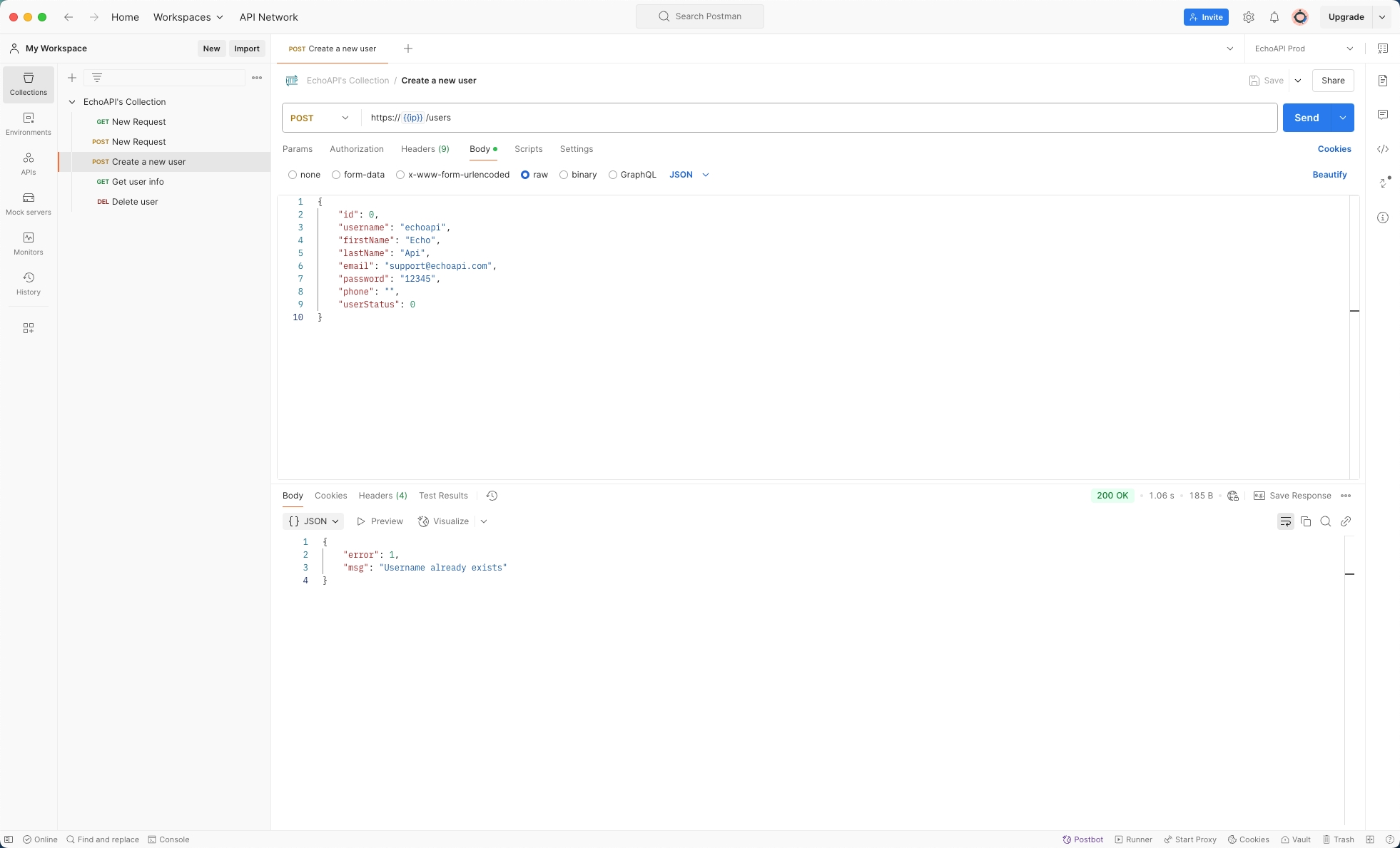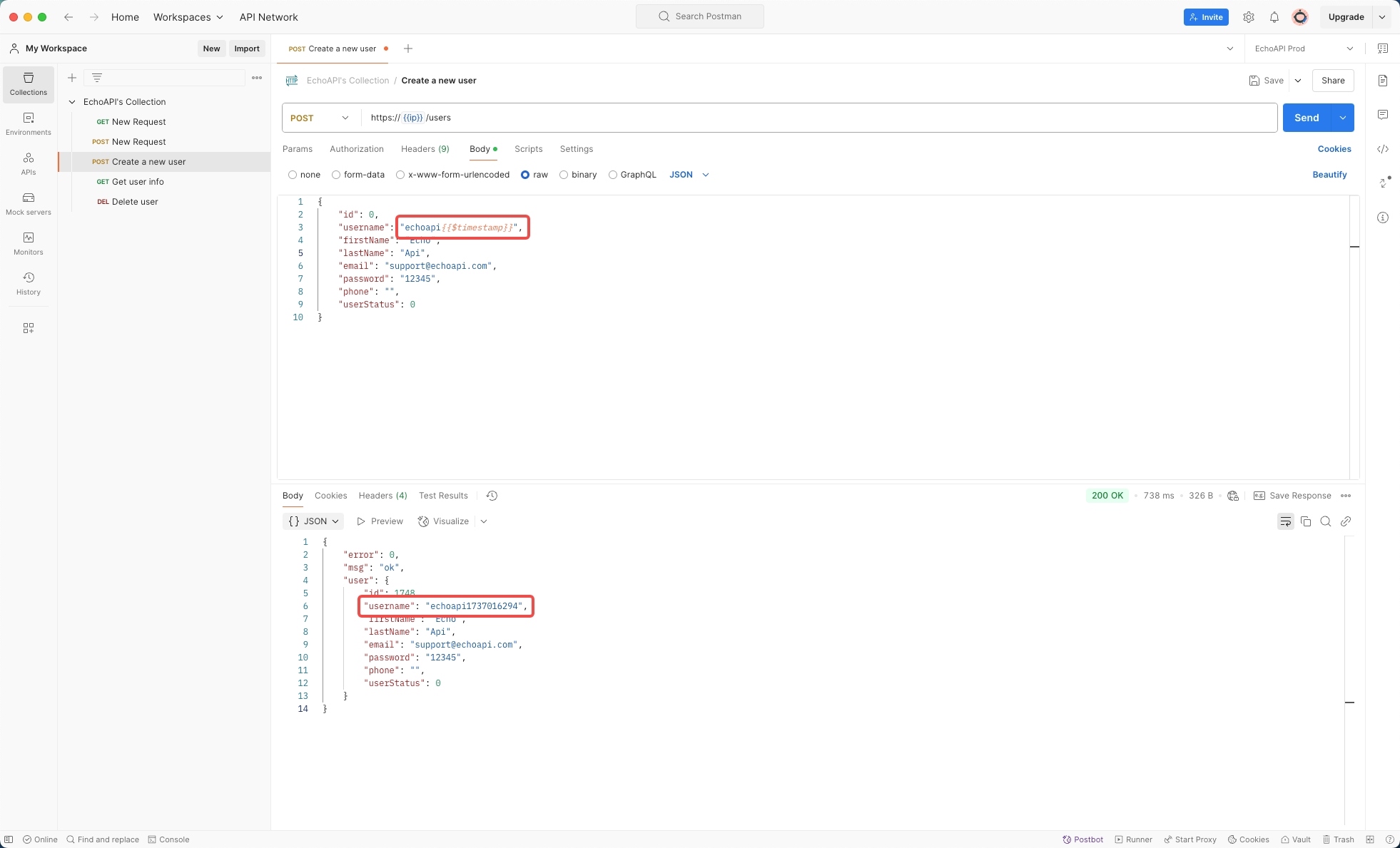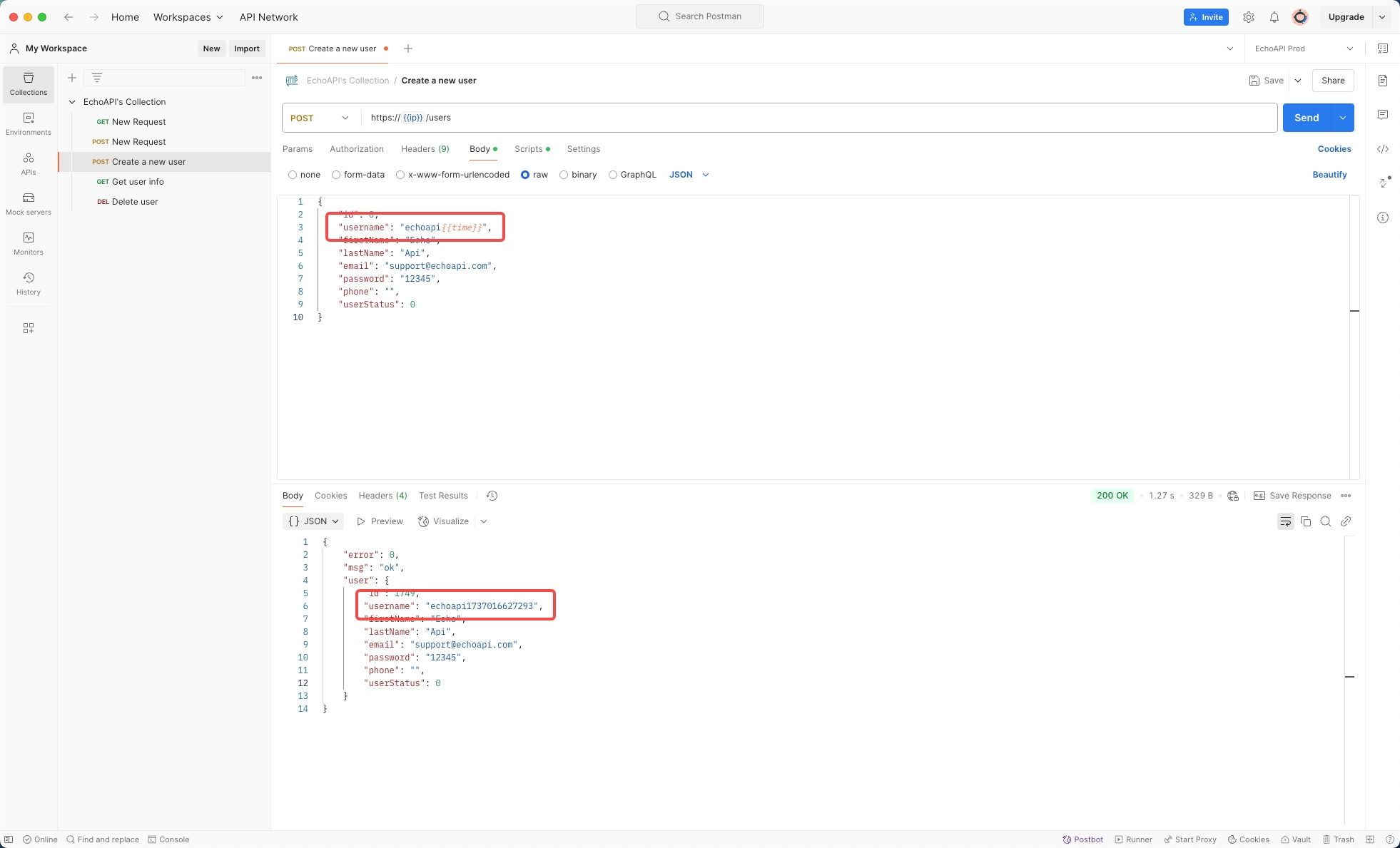Mastering Postman: Built-In and Custom Dynamic Parameters in Postman
Whether you’re dealing with built-in or custom dynamic parameters, Postman provides robust tools to automate and simplify tedious aspects of API testing.
Postman has become an indispensable tool for developers, enabling them to efficiently debug and test APIs. Among its many features, the ability to handle dynamic parameters stands out as a crucial technique that can streamline development workflows and minimize repetitive tasks.

In this article, we will address a common challenge faced by developers: manually modifying parameters in API requests. While manual adjustment works, it can quickly become tedious and error-prone, especially for tests requiring multiple iterations. To solve this, we’ll explore Postman’s built-in dynamic parameters and walk through how to create custom dynamic parameters.
But before diving into this topic, let’s revisit three common scenarios where Postman really shines:
1. Handling multiple environments: Learn how to manage different environments in Postman in this detailed guide.

2. Achieving API chaining: See how Postman can link API requests seamlessly with techniques discussed here.


3. Dynamic input values: This is what we’ll focus on in today’s article—automating dynamic modification of API parameters.
Let’s jump in and see how to leverage Postman’s dynamic parameter features to solve the issue of manual modifications.
Built-In Dynamic Parameters in Postman

Postman has several built-in dynamic parameters that you can use out of the box. These parameters simplify tasks that involve generating random or time-sensitive data. Here are some examples:
{{$timestamp}}: Generates the current Unix timestamp (in milliseconds).{{$randomInt}}: Generates a random integer between 0 and 1,000.{{$guid}}: Generates a random GUID string.
Example Use Case: Avoiding "Username Already Exists" Errors
Imagine you’re working on the Create a New User API. If you repeatedly use a fixed username, such as echoapi, you’ll receive an error message:
{
"error": 1,
"msg": "Username already exists"
}

To handle this, you can append a built-in dynamic parameter to the username field. For example:
{
"username": "echoapi{{$timestamp}}"
}
When you send the request, Postman will replace {{$timestamp}} with the current Unix timestamp, ensuring each request has a unique username. This approach saves you from manually modifying the username for each request and avoids conflicts caused by duplicate entries.

Built-in dynamic parameters offer a quick way to generate random or unique values, making your tests more efficient, reliable, and automated.
Custom Dynamic Parameters in Postman
While Postman’s built-in dynamic parameters are incredibly helpful, some scenarios may require creating your own custom dynamic parameters. Let’s use the generating a timestamp scenario to demonstrate how to create and use custom dynamic parameters.
Step 1: Write a Pre-Request Script
Pre-request scripts are executed before sending an API request. To create a custom timestamp:
1. Navigate to the Pre-request Script section of your API request.

2. Write a small script to generate the current timestamp:
var time = Date.now();
pm.globals.set("time", time);
Date.now()generates the current Unix timestamp.pm.globals.setsaves the generated value as a global variable (time) that can be accessed in any API request.


Step 2: Use the Custom Parameter in the Request
Now, modify the username field in the request payload to use the dynamically generated timestamp. For example:
{
"username": "echoapi{{time}}"
}

When you send the request, Postman will replace {{time}} with the value generated in the pre-request script. For instance:
{
"error": 0,
"msg": "ok",
"user": {
"id": 1749,
"username": "echoapi1737016627293",
"firstName": "Echo",
"lastName": "Api",
"email": "support@echoapi.com",
"password": "12345",
"phone": "",
"userStatus": 0
}
}

This method allows you to create dynamic parameters tailored to your specific testing needs, extending Postman’s flexibility even further.

Conclusion
Whether you’re dealing with built-in or custom dynamic parameters, Postman provides robust tools to automate and simplify tedious aspects of API testing. Using built-in dynamic parameters (such as {{$timestamp}}, {{$randomInt}}, and {{$guid}}) is perfect for most use cases, while custom dynamic parameters enable even greater control and versatility for more complex scenarios.
By leveraging these features, you can eliminate repetitive manual modifications, reduce errors, and streamline your testing workflow. As a developer, mastering dynamic parameters is an essential skill that will save you time and increase the reliability of your tests.
Postman’s versatility and efficiency come to life when you use these tools strategically—so start exploring dynamic parameters today and see how much smoother your testing process becomes!




 EchoAPI for VS Code
EchoAPI for VS Code

 EchoAPI for IntelliJ IDEA
EchoAPI for IntelliJ IDEA

 EchoAPl-Interceptor
EchoAPl-Interceptor

 EchoAPl CLI
EchoAPl CLI
 EchoAPI Client
EchoAPI Client API Design
API Design
 API Debug
API Debug
 API Documentation
API Documentation
 Mock Server
Mock Server








